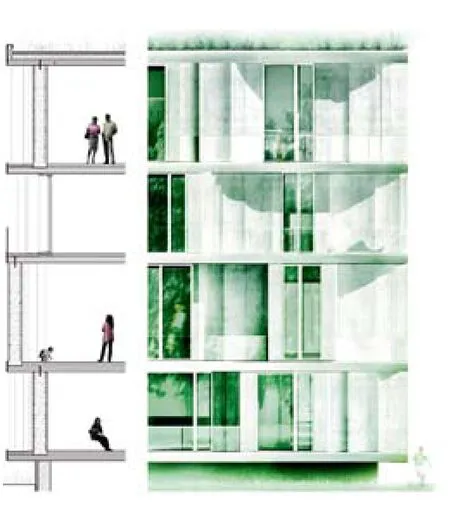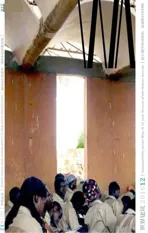混凝土使用的新途径
2016-12-21
混凝土使用的新途径
A New Trajectory for the Use of Concrete

3 外立面及剖面/Façade elevation and vertical section

4 材料组合/Material combination

5 能源概念/Energy concept

6 构造/Construction
该设计方案将未来的汉堡市视为一个高性能、有吸引力的21世纪大都市。智能材料住房的任务书要求设计方案提出适用于欠发达地区居住项目的创新建造技术以及材料。这些单元住房的面积介于90~225m2之间,采用快速生长的冷杉木板和预制次轻质混凝土墙。轻质混凝土的重量是传统混凝土的1/3,采用再循环泡沫玻璃作为内部骨料,有自绝缘特性,并可使建筑物接近零碳排放效应。墙壁嵌入管道导管,通过水导热和冷却,3层玻璃提供隔音隔热效果,屋顶种植本地植被。
设计团队/Design Team: Frank Barkow, Regine Leibinger/ Barkow Leibinger; Mike Schlaich/TU Berlin; Matthias Schuler/Transsolar Energietechnik GmbH
Te design scheme addresses the future of the city of Hamburg as a high-performing and attractive 21st century metropolis. The brief for the Smart Material House required proposals for innovative building techniques and materials for a public housing project in a less developed neighborhood. The units range in size between from 90 to 225 m2and incorporate fastgrowth fir decking slabs with pre-fabricated infralightweight concrete walls. The lightweight concrete is one-third of the weight of conventional concrete, is selfinsulated utilizing recycled foamed glass as an internal aggregate and allows the building to approach a zerocarbon material effect. Te walls are embedded with tube conduits to provide conductive heating and cooling via water, triple-glazing improves sound and heat insulation, and the roof is planted with local vegetation.
